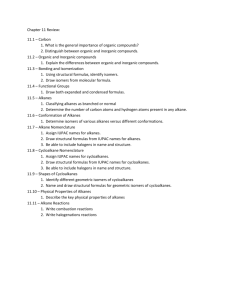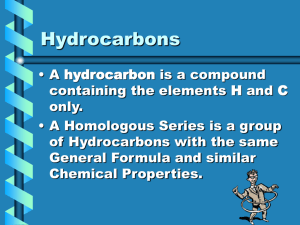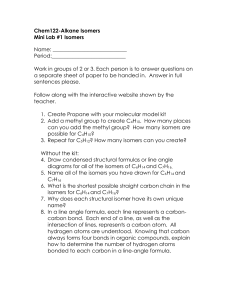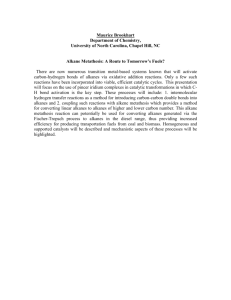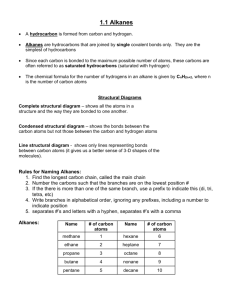hydrocarbons - bananateachersworld
advertisement
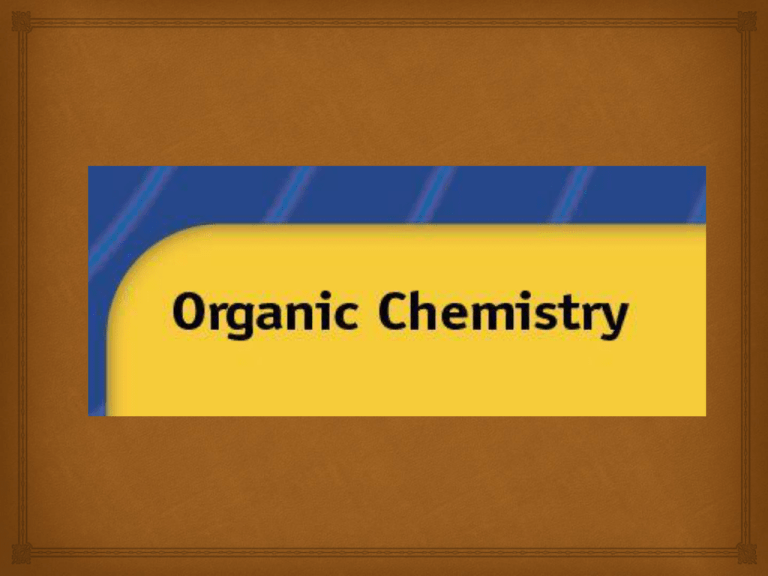
Organic chemistry is the study of carbon-containing compounds. Compounds that are formed from carbon and hydrogen. (Natural) occurs naturally (Synthetic) man-made -Willow treeSALICIN The model at the bottom right of the picture shows a close relative of salicin. Scientists made, or synthesized, this chemical near the end of the nineteenth century. It is called acetyl salicylic acid (ASA). You probably know it better by its brand name, Aspirin™. Origin of Hydrocarbons Representing Hydrocarbons MOLECULAR FORMULA Tells the number of atoms of each element in a compound STRUCTURAL FORMULA Two-dimensional representation of the structure of a compound. Also called structural diagram. Three kinds of Structural Diagrams Use the compound C6H14 as an example. 6 Carbon atoms 14 Hydrogen atoms First Second Third Isomers Compounds with same molecular formulas but different structural formulas. C6H14 for example. Think of another possible isomer of C6H14 and draw the complete structural formula/diagram. Let’s practice! Draw the structural formula for all the isomers of C5H12. Draw the structural formula for all the isomers of C3H8. Draw the structural formula for all the isomers of C7H16. Three-Dimensional Structural Diagrams The shape of CH4 (Methane) is tetrahedral as predicted by VSEPR theory and proven by orbital hybridization. Our knowledge about VSEPR theory and orbital hybridization will help us make three-dimensional models of isomers. Classifying Hydrocarbons Alkanes 3 facts about Alkanes Properties of Alkanes Naming Alkanes Straight-Chain Alkanes Branched-Chain Alkanes Name it! Draw it!



